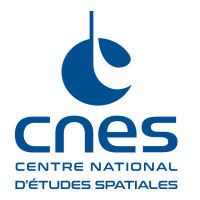The GEIPAN explains the weirdness and documents the unexplained
How can the weirdness perceived in a sighting be explained by one or several known phenomena? The most difficult phenomenon to explain can be:
- the one that initiated the sighting because there is always something in the sky, hoaxes being very rare:
- ball lightning, fall of a meteorite, night-club laser lights projecting toward the sky, orbital launcher degassing…or even Chinese lanterns ;
- and/or the one that, with a banal origin, will add weirdness to the sighting:
- wingless or stationary aircraft, holes in clouds in front of a red moon, moving star due to the autokinetic perception phenomenon…
These interdisciplinary (from physics to psychology) investigations are based on the actual scientific knowledge only (no explanations based on a future or hypothetical science). When no explanation is possible, the aim is to characterize the phenomena as well as possible before dissemination to science and researchers.
A reproductible methodology
The GEIPAN uses a reproducible methodology for each survey. The methodology is based on current scientific knowledge and known aerospace phenomena. It follows 7 steps:
1. Collecting the testimony
2. Creating the Record
3. First analysis
4. Investigation and Processing
5. Classification in A, B, C, D1 or D2
6. Anonymization of the file
7. Informing the witness and publication on the website
If the testimony is very easy to explain without investigation a quick response is given to the witness and the processing of the file stops there without publication on the website of GEIPAN. In other situations an observation case file will be created.
GEIPAN gives priority to easy-to-solve cases and very strange cases. As the human resources of GEIPAN are limited the processing of all cases is carried out over several months or even years.
Complexity and fragility of the human testimony
The GEIPAN always works from human testimonies. Most of the time a single one, sometimes several (witnesses can then be related to each other or not), including sometimes traces of the sightings: photos, radar traces, or more rarely some traces left by the phenomenon on the ground.
The analysis of what is reported by the witness is aiming at identifying what was really seen in a story that can be altered by factors from human origin such as :
- Vision deficiency;
- Perception mistakes due to the brain short-term processing (autokinetic effect) or due to psychological constructs (distance and speed of the UAP described by the witness, whereas it is clearly not possible to assess them from a non-recognized object, “pivot effect”, wrong reconstitution of the path);
- Identification and interpretation of the weirdness. Generally, the sighting is immediately and unconsciously transformed by the witness into a mix of what is really seen and a depiction of social and psychological representations made by the witness being the closest possible to what he/she knows and can identify. The less the sighting is easily identifiable and recognizable, the more cultural and social interpretations will be important in his/her testimony. Cultural differences will also be involved. When we meet the witness at distance from the sighting, the delayed interpretation can involve some opinions and beliefs;
- The emotion felt by the witnesses is one of the main factor that will increase the components described above and as a consequence will increase weirdness;
- Memory is of course involved, along with what is called “false memories” (memories acquired after the sighting and that will unconsciously be added to the lived memories);
- Culture of the witness will impact on the sighting report (the witness will use his/her own vocabulary).
The GEIPAN uses a cognitive interview developed by the Cognitive Psychology laboratory of Toulouse (http://clle.univ-tlse2.fr/) from the CNRS (« Centre National de la Recherche Scientifique »). This research team is working in this field by helping the police. The GEIPAN testimonies are very useful and a joint CNRS-CNES phD thesis was even sustained in order to better understand the “false memories “. Investigators are all trained to cognitive interview and apply it during their interactions with witnesses.
Witnesses are ordinary people, coming from all social environments
Even the most experienced sky users can be caught by surprise. For example, pilots must report every odd OBSERVATION whether or not it impacts aerial security. However, it can be celestial bodies, a satellite falling back to earth or a meteorite entering in the earth atmosphere. Among the very odd unexplained cases, numerous ones are reported by aeronautical experienced sky users (pilots…).
Sometimes, witnesses try to justify the consistency of their sighting and their interpretation of what they have seen by their education level or by their professional expertise. Later on, they often are the most active in challenging or even denying the GEIPAN conclusions.
Explained and unexplained cases are equally interesting
To understand the complexity of the human testimony, as we have inside what has been reported but also what (probably) happened;
- To understand the complexity of the human testimony, as we have inside what has been reported but also what (probably) happened;
- To understand the difficulty of the investigations; the border between an explained and an unexplained case can be tiny and sometimes depends of very few but decisive details;
- To improve the reliability of what is declared “unexplained”.
Remark: the unexplained can be of interest for basic physics, whereas explained cases could represent at least a similar or even a larger interest for the social sciences.
FAQ GEIPAN
1. What is GEIPAN?
- GEIPAN (Group for the Study and Information of Unidentified Aerial/Aerospace Phenomena) is a technical department of the CNES (French Space Agency). Its mission is to collect, analyze, investigate, publish, and archive reports of UAP (Unidentified Aerial/Aerospace Phenomena) sightings.
- It also provides information and data to the public regarding UAPs and UFOs.
2. Is GEIPAN an independent structure?
- No, GEIPAN is a technical department of CNES (Centre National d’Études Spatiales), a public, industrial and commercial institute in charge of the definition and implementation of the French space policy. CNES operates under the supervision of the French government; Economy & Finance, Education & Research and the Defense Ministries
- GEIPAN is integrated within CNES as an expertise department.
3. Does GEIPAN carry out a national security or space surveillance mission?
- No. GEIPAN does not involve in a security topic nor a sky and space awareness or alert service.
- For any questions or alertsregarding your safety, please contact the appropriate authorities (police, gendarmerie, civil security, etc.).
4. Does GEIPAN research UFOs and extraterrestrial life?
- Contrary to popular belief, GEIPAN is not a research group on UFOs and extraterrestrial life, or other paranormal phenomena.
5. Does GEIPAN operate continuously?
- No. GEIPAN collects testimonies, analyzes the data, and then conducts an investigation using a multidisciplinary approach combining physical sciences and human factors.
- GEIPAN uses only recognized scientific knowledge, without speculation or unverified hypotheses.
- GEIPAN is not focused to respond immediately to requests related to UAP observations.
6. Does GEIPAN guarantee the confidentiality of testimonies?
- Yes. GEIPAN's mission is to publish its work while ensuring the anonymity of witnesses and the published documents linked to the investigation.
- Refer to the PRIVACY POLICY section regarding the protection of personal data collected for the purposes of investigations.
7. What is the methodology used?
GEIPAN follows a methodology summarized in seven key stages:
1. Receiving the testimony
2. Creating the file
3. Initial analysis
4. Investigation and processing
5. Classification into A, B, C, D
6. Anonymizing the files
7. witness information and publication
8. How does GEIPAN classify observation cases?
The classification process is done according a quantitative and qualitative assessment of two parameters: the consistency (C) of the observation and the residual strangeness (E) after investigation.
- Strangeness (E): This is the measure of the residual strangeness after comparison with known phenomena hypotheses.
- Consistency (C): This is the product of the quantity and the reliability of the data submitted and collected during the investigation. The objectivity of this data is weighted according to a specific table, part of the GEIPAN methodology.
Classification categories:
- Classification A: Phenomenon perfectly identified after investigation.
- Classification B: Phenomenon probably identified after investigation.
- Classification C: Phenomenon not identified due to lack of data or information.
- Classification D: Phenomenon not identified after investigation.
A revisit process, or a new analysis, of cases C and D may be conducted if new information related to these cases is communicated to GEIPAN after the initial investigation.
9. Who can testify?
- Anyone can provide testimony.
- GEIPAN is not sized to respond to indirect witness(es) of an UAP observation (i.e. reported by third parties).
- Testimony from minor witness is subject to parental authorization.
10. What is the place of human testimony in the investigation?
- Human testimony is at the core of the process and methodology for GEIPAN.
- GEIPAN only investigates phenomena reported by one or more direct witnesses of the observation.
- The witness must fulfil the technical questionnaire (QT), designed to gather the essential and substantial information to open an investigation.
- Visual, material or detection matters such as sketches, photographs, videos, etc. may complete the QT.

